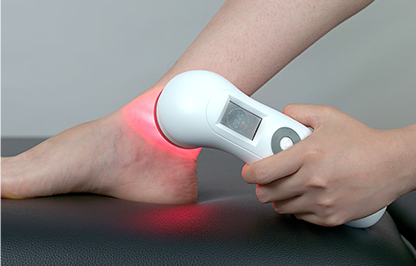
Arthritis pain affects millions worldwide, causing debilitating joint discomfort and impacting daily activities. This comprehensive guide explores the latest treatments and strategies for managing arthritis pain, from lifestyle adjustments to cutting-edge medical interventions. Understanding the various types of arthritis, associated symptoms, and effective treatment options is crucial for managing this chronic condition effectively. This article will discuss different types of arthritis, explore potential causes, delve into a variety of treatment approaches, and provide practical advice for managing arthritis pain. We will also examine important factors like lifestyle modifications, and highlight potential side effects of various treatments. This structured guide will help you navigate the complexities of arthritis treatment and identify suitable options to enhance your overall well-being.
Understanding Arthritis and Its Types
Different Types of Arthritis
Arthritis encompasses a wide range of conditions affecting the joints. Rheumatoid arthritis, osteoarthritis, and psoriatic arthritis are just a few examples. Each type has unique characteristics and requires tailored treatment approaches. Rheumatoid arthritis, for instance, is an autoimmune condition where the body’s immune system attacks the joints. Osteoarthritis is a degenerative condition that often develops with age and wear and tear on the joints. Psoriatic arthritis is often linked with psoriasis, another skin condition, and can affect multiple joints simultaneously. Understanding the specific type of arthritis you have is paramount in developing an effective treatment plan.
Symptoms and Diagnoses
Recognizing arthritis symptoms is the first step towards seeking appropriate medical attention. Common symptoms include persistent joint pain, stiffness, swelling, and reduced range of motion. The intensity and duration of these symptoms can vary greatly depending on the individual and the type of arthritis. A proper diagnosis requires a thorough evaluation by a healthcare professional, including a physical examination, medical history review, and potentially imaging tests like X-rays or MRIs. Early diagnosis allows for early intervention and often leads to better long-term outcomes.
Non-Pharmacological Approaches
Lifestyle Modifications for Arthritis
Implementing lifestyle adjustments can significantly mitigate arthritis pain and improve overall well-being. Regular exercise is essential for maintaining joint flexibility and strength. Low-impact activities like swimming, water aerobics, and walking are generally recommended. Maintaining a healthy weight can also ease stress on the joints, while a balanced diet rich in essential nutrients can support joint health. Adequate rest and sleep are crucial for the body’s natural healing process.
Therapeutic Exercises
Specific exercises can target specific areas of joint pain and improve strength and flexibility. Physical therapy is often beneficial in providing guidance and monitoring progress. These exercises can range from simple stretching to targeted strengthening activities. Consistency is key to experiencing positive results. Moreover, heat and cold therapies are useful in soothing pain and inflammation.
Medications and Treatments
Pain Relievers and Anti-Inflammatory Drugs
Various medications can help manage arthritis pain and inflammation. Over-the-counter pain relievers like ibuprofen or naproxen can provide temporary relief from mild to moderate pain. Prescription medications, such as corticosteroids or disease-modifying antirheumatic drugs (DMARDs), may be necessary for more severe cases. These medications can help slow down the progression of the disease and potentially prevent further joint damage.
Alternative Therapies
Complementary and Alternative Therapies
Various alternative therapies, including acupuncture, massage, and yoga, have shown promise in providing relief and managing symptoms. These therapies can complement conventional treatments, offering potential additional avenues for pain reduction and symptom management. It’s crucial to discuss any alternative therapies with your healthcare provider before starting them, ensuring they don’t interfere with other treatments or exacerbate existing health conditions.
Surgical Interventions
Joint Replacement Surgery
In some cases, joint replacement surgery may be necessary to alleviate severe pain and restore joint function. Total joint replacement, for instance, involves replacing a damaged joint with an artificial one. This procedure can improve mobility and decrease pain in individuals with advanced joint damage.
Other Surgical Procedures
Other surgical procedures may also be considered depending on the specific type and severity of arthritis. These procedures can vary based on the location and extent of damage within the joints.
How can I manage arthritis pain at home?
Several home remedies and lifestyle adjustments can help manage arthritis pain. Regular exercise is crucial for maintaining joint flexibility and strength. Maintaining a healthy weight and eating a balanced diet can also help reduce stress on the joints. Adequate rest and sleep are key to the body’s natural healing processes. Applying heat or ice packs can also provide temporary relief from pain and swelling.
What are some of the side effects of arthritis medication?
Some arthritis medications, especially stronger ones, may have potential side effects. These side effects can vary depending on the medication and individual. Possible side effects can range from mild gastrointestinal issues to more serious complications. Always discuss any potential side effects with your doctor or pharmacist.
What specialist should I consult for arthritis pain?
Consult a rheumatologist for diagnosis and treatment plans related to arthritis. Rheumatologists specialize in the diagnosis and management of rheumatic diseases, including various types of arthritis. They are equipped to provide comprehensive care and tailor treatment options specific to your needs.
FAQ
What are the most common types of arthritis?
Common types of arthritis include rheumatoid arthritis, osteoarthritis, and psoriatic arthritis. Rheumatoid arthritis is an autoimmune disease that triggers inflammation in the lining of the joints. Osteoarthritis occurs from the breakdown and wearing down of cartilage within the joint. Psoriatic arthritis develops in individuals with psoriasis, another common skin condition.
In conclusion, managing arthritis pain requires a multifaceted approach that encompasses lifestyle modifications, medication, and potential surgical interventions. By understanding the underlying causes, identifying suitable treatment options, and proactively managing symptoms, individuals can significantly improve their quality of life. Remember to consult with a healthcare professional for personalized advice and treatment plans. This article provides valuable insights into current treatments and strategies, but it does not constitute medical advice. Always seek professional medical guidance for any health concerns.